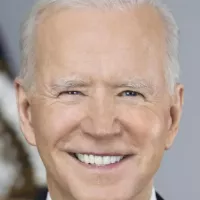Colorado, a Mountain and Southwestern U.S. state, is the eighth-largest by area and 21st by population, with an estimated 5,957,493 residents in 2024. Known for its diverse landscape, it encompasses the Southern Rocky Mountains, a portion of the Colorado Plateau, and the western Great Plains. Sharing the Four Corners region, Colorado is bordered by Wyoming, Nebraska, Kansas, Oklahoma, Arizona, New Mexico, and Utah. Its varied terrain includes mountains, forests, high plains, mesas, canyons, plateaus, rivers, and deserts.
1901: Denver Consecutive Days Above 90°F Record
In 1901, Denver established a record for the number of consecutive days above 90°F (32°C).
1903: Western Federation of Miners Strike
In 1903, poor labor conditions and discontent among miners resulted in the 1903-1904 Western Federation of Miners Strike.
1904: Western Federation of Miners Strike continues
The 1903-1904 Western Federation of Miners Strike continued in 1904.
1905: Holly Sugar First Milled
In 1905, Holly Sugar was first milled from beets in Holly, Colorado.
1906: Oscar Wilde's Impressions of America
In Oscar Wilde's 1906 Impressions of America, he wrote that Leadville was "the richest city in the world. It has also got the reputation of being the roughest, and every man carries a revolver."
1908: Democratic Party Convention in Denver
In 1908, Colorado became the first western state to host a major political convention when the Democratic Party met in Denver.
1910: Uranium and Vanadium as Byproducts
From 1910 to 1922, when Colorado and Utah dominated radium mining, uranium and vanadium were the byproducts.
1910: Samsonite Luggage Origin
In 1910, Samsonite luggage, a nationally known brand, originated in a Colorado factory in Denver.
1911: Gates Belts and Hoses Origin
In 1911, Gates belts and hoses, a nationally known brand, originated in a Colorado factory in Denver.
1913: Colorado Coalfield War
In 1913, the 1913-1914 Coalfield War resulted in federal troops intervening to end the violence.
1914: Colorado Coalfield War continues
The 1913-1914 Coalfield War continued in 1914, resulting in federal troops intervening to end the violence.
1920: CoorsTek Industrial Ceramics Origin
In 1920, CoorsTek industrial ceramics, a nationally known brand, originated in Golden, Colorado.
1920: Denver streetcar strike
In 1920, the Denver streetcar strike resulted in federal troops intervening to end the violence.
1922: Uranium and Vanadium as Byproducts
From 1910 to 1922, when Colorado and Utah dominated radium mining, uranium and vanadium were the byproducts.
1923: Russell Stover Candies Origin
In 1923, Russell Stover Candies, a nationally known brand, originated in a Colorado factory in Denver.
April 1, 1924: Armed Students Patrolled Campus
On April 1, 1924, armed students patrolled the Regis College campus after a burning cross was found, marking the climax of tensions with the Ku Klux Klan.
1924: Ku Klux Klan Dominance in Colorado Politics
In 1924, the Ku Klux Klan Colorado Realm achieved dominance in Colorado politics, controlling local and state Democrat and Republican parties.
1927: Colorado Coal Strike
In 1927, the 1927-28 Colorado coal strike occurred and was ultimately successful in winning a dollar a day increase in wages. During it however the Columbine Mine massacre resulted in six dead strikers following a confrontation with Colorado Rangers.
1930: Colorado Population Exceeds One Million
By the U.S. census in 1930, the population of Colorado first exceeded one million residents.
1930: Monfort of Colorado, Inc. Established
In 1930, the present-day Swift packed meat of Greeley evolved from Monfort of Colorado, Inc.
November 8, 1932: Colorado approved the repeal of alcohol prohibition
On November 8, 1932, Colorado approved the repeal of alcohol prohibition, more than a year before the Twenty-first Amendment to the United States Constitution was ratified.
1935: Renaming of Agricultural College of Colorado
In 1935, the Agricultural College of Colorado was renamed the Colorado State College of Agriculture and Mechanic Arts.
1940: Colorado's population as reported by the U.S. Census Bureau
In 1940, the U.S. Census Bureau reported Colorado's population as 8.2% Hispanic and 90.3% non-Hispanic White.
1940: Ute Mountain Ute Indian Reservation established
In 1940, the Ute Mountain Ute Indian Reservation was established.
1941: USS Colorado at Pearl Harbor
In 1941, at the time of the attack on Pearl Harbor, the battleship USS Colorado was located at the naval base in San Diego, California, and thus went unscathed.
1945: Last Wild Wolf Shot
In 1945, the last wild wolf in Colorado was shot, marking the end of a process of extirpation by trapping and poisoning of the gray wolf.
1947: Introduction of Mountain Goats
Between 1947 and 1972, mountain goats were introduced to Colorado.
1948: Colorado voted for the Democratic candidate in presidential election
In 1948, Colorado voted for the Democratic candidate in the presidential election, marking an exception in the state's reliably Republican voting pattern during the post-World War II era.
1949: Jolly Rancher Candy Origin
In 1949, Jolly Rancher candy, a nationally known brand, originated in Golden, Colorado.
1953: Colorado banned the sale of motor vehicles on Sunday
Since at least 1953, Colorado has banned the sale of motor vehicles on Sundays, as per C.R.S. section 12-6-302.
April 1, 1954: Law signed for U.S. Air Force Academy creation
On April 1, 1954, President Dwight Eisenhower signed a law to create a U.S. Air Force Academy.
September 11, 1957: Plutonium Fire at Rocky Flats Plant
On September 11, 1957, a plutonium fire occurred at the Rocky Flats Plant, resulting in the significant plutonium contamination of surrounding populated areas.
1957: Renaming of Colorado State College
In 1957, the Colorado State College of Agriculture and Mechanic Arts became Colorado State University.
1958: Estes Model Rockets Launched
In 1958, Estes model rockets were launched in Penrose, Colorado.
1958: First Gubernatorial Race for a Native-Born Coloradan
In 1958, the election marked the first electoral victory for a native-born Coloradan in a gubernatorial race.
1962: Waterpik Dental Water Jets and Showerheads
Since 1962, Fort Collins has been the home of Waterpik dental water jets and showerheads.
1964: Colorado voted for the Democratic candidate in presidential election
In 1964, Colorado voted for the Democratic candidate in the presidential election, marking an exception in the state's reliably Republican voting pattern during the post-World War II era.
1965: Denver Flood
In 1965, the Denver Flood occurred, causing significant damage.
1967: Colorado Loosens Abortion Restrictions
In 1967, Colorado was the first state to loosen restrictions on abortion when governor John Love signed a law allowing abortions in cases of rape, incest, or threats to the woman's mental or physical health.
March 1969: National Chicano Youth Liberation Conference
In March 1969, the National Chicano Youth Liberation Conference was held in Colorado.
1969: Celestial Seasonings Herbal Teas
Since 1969, Celestial Seasonings herbal teas have been made in Boulder, Colorado.
May 12, 1970: Denver chosen as host city for the 1976 Winter Olympics
On May 12, 1970, Denver was chosen by the International Olympic Committee as the host city for the 1976 Winter Olympics.
1972: Introduction of Mountain Goats continues
Between 1947 and 1972, mountain goats were introduced to Colorado.
1972: Colorado voters rejected funding for the 1976 Winter Olympics
In 1972, Colorado voters rejected a referendum proposal to fund the 1976 Winter Olympics, which had been scheduled to be held in the state.
1973: Earthquake Recording Started
As of June 2020, there were 525 recorded earthquakes in Colorado since 1973.
1973: John Arthur Love Given a Position
In 1973, John Arthur Love was given a position in Richard Nixon's administration.
1975: Last Non-Native Born Governor
In 1975, John David Vanderhoof left office as the last non-native born governor until 2007.
1976: Big Thompson River Flooding
In 1976, the Big Thompson River flooding occurred.
1976: Scheduled date for the Winter Olympics in Colorado, which were rejected by voters in 1972
The 1976 Winter Olympics had been scheduled to be held in Colorado, but voters rejected a referendum proposal to fund them in 1972.
1981: Rocky Mountain Chocolate Factory First Candy
In 1981, Rocky Mountain Chocolate Factory made its first candy in Durango, Colorado.
1984: Presidential Election
In presidential elections, it had not been won until 2020 by double digits since 1984.
February 1, 1985: Lowest Official Air Temperature Recorded
On February 1, 1985, the lowest official air temperature ever recorded in Colorado was −61 °F (−51.7 °C) at Maybell.
1988: Rio Grande Acquired
In 1988 the "Rio Grande" was acquired, but was merged into, the Southern Pacific Railroad by their joint owner Philip Anschutz.
July 11, 1990: Severe Hailstorm Hits Denver
On July 11, 1990, a severe hailstorm hit Denver, causing human injuries and significant property damage.
1990: Limon F3 Tornado
In 1990, the Limon F3 tornado caused damage in the Eastern Plains of Colorado.
1991: Regis University Renamed
In 1991, Regis College was renamed Regis University.
1992: Colorado voted for the Democratic candidate in presidential election
In 1992, Colorado voted for the Democratic candidate in the presidential election, marking an exception in the state's reliably Republican voting pattern during the post-World War II era.
1992: Colorado voters approved Amendment 2 to the state constitution
In 1992, by a margin of 53 to 47 percent, Colorado voters approved Amendment 2 to the state constitution, which would have prevented any city, town, or county in the state from recognizing homosexuals or bisexuals as a protected class.
1993: Mountain Goats Declared Native Species
In 1993, despite being an artificially-introduced species, the state declared mountain goats a native species.
September 11, 1996: Anschutz Sale to Union Pacific
On September 11, 1996, Philip Anschutz sold the combined company to the Union Pacific Railroad, creating the largest railroad network in the United States.
1996: U.S. Supreme Court ruled against Amendment 2 in Romer v. Evans
In 1996, in a 6–3 ruling in Romer v. Evans, the U.S. Supreme Court found that preventing protected status based upon homosexuality or bisexuality did not satisfy the Equal Protection Clause, effectively overturning Amendment 2 in Colorado.
1999: Columbine High School Massacre
In 1999, the Columbine High School massacre occurred, where two gunmen killed 12 students and one teacher before committing suicide.
November 7, 2000: Amendment 20 Passed
On November 7, 2000, 54% of Colorado voters passed Amendment 20, amending the Colorado State constitution to allow the medical use of marijuana.
2000: Colorado's Native Population
According to the 2000 census, nearly 60% of Coloradans are native to other states.
2000: Largest ancestry groups in Colorado
According to the 2000 census, the largest ancestry groups in Colorado are German (22%), Mexican (18%), Irish (12%), and English (12%).
2000: Estimated Hispanic population in Colorado
Per the 2000 census, the Hispanic population in Colorado is estimated to be 918,899, or approximately 20% of the state's total population.
2000: Legalization of Marijuana
With the adoption of the 64th state amendment in 2012, Colorado became the first state in the union to legalize marijuana for medicinal (2000), industrial (referring to hemp), and recreational (2012) use.
2001: Revival of Uranium Mining
Uranium price increases from 2001 to 2007 prompted several companies to revive uranium mining in Colorado.
2003: Suspension of Senior Property Tax Exemption
In 2003, the Colorado Legislature temporarily suspended the state's senior property tax exemption.
2004: Percentage of population considered obese
In 2004, 17% of Colorado's population was considered medically obese.
2006: Voters passed Amendment 43, banning same-sex marriage in Colorado
In 2006, voters passed Amendment 43, which banned same-sex marriage in Colorado.
2006: Tax Break Return
The senior property tax break was scheduled to return for the assessment year 2006, payable in 2007.
2006: Total births in Colorado
There were a total of 70,331 births in Colorado in 2006, resulting in a birth rate of 14.6 per thousand.
2007: Bill Ritter Takes Office
In 2007, Bill Ritter, a native-born Coloradan, took office as governor.
2007: Non-Hispanic Whites involved in births
In 2007, non-Hispanic Whites were involved in 59.1% of all births in Colorado. Some 14.06% of those births involved a non-Hispanic White person and someone of a different race, most often with a couple including one Hispanic. A birth where at least one Hispanic person was involved counted for 43% of the births in Colorado.
2007: Payable Property Tax
The senior property tax assessment year 2006 was payable in 2007.
2007: Revival of Uranium Mining
Uranium price increases from 2001 to 2007 prompted several companies to revive uranium mining in Colorado.
2008: Denver Consecutive Days Above 90°F Record Broken
During the summer of 2008, Denver's record in 1901 for the number of consecutive days above 90 °F (32 °C) was broken with a new record of 24 consecutive days.
2008: Colorado voted for Barack Obama in presidential election
In 2008, Colorado voted for Barack Obama in the presidential election, marking a shift towards the Democratic Party in the state's voting patterns.
2008: Windsor EF3 Tornado
In 2008, the Windsor EF3 tornado devastated a small town in the Eastern Plains of Colorado.
2008: Cancellation or Scaling Back of Uranium-Mining Project
In late 2008, price drops and financing problems forced companies to cancel or scale back the uranium-mining project.
2009: Colorado Population Exceeds Five Million
In 2009, the United States Census Bureau estimated that the population of Colorado exceeded five million.
2010: Largest Christian denominations by the number of adherents
According to the Association of Religion Data Archives, in 2010 the largest Christian denominations by the number of adherents in Colorado were the Catholic Church with 811,630; multi-denominational Evangelical Protestants with 229,981; and the Church of Jesus Christ of Latter-day Saints with 151,433.
2010: Colorado's percentage of Hispanics in the U.S.
As of the 2010 census, Colorado has the seventh highest percentage of Hispanics (20.7%) in the U.S.
2010: Boulder Named Foodiest Town
In 2010, Boulder was named America's Foodiest Town by Bon Appétit.
2010: Per capita personal income
Per capita personal income in 2010 was $51,940, ranking Colorado 11th in the nation.
2010: Previous census count for the Denver-Aurora-Centennial, CO Metropolitan Statistical Area
The 2010 census was used to calculate the increase in population within the Denver-Aurora-Centennial, CO Metropolitan Statistical Area, which was recorded in 2020.
2010: Previous census count for the Denver-Aurora-Greeley, CO Combined Statistical Area
The 2010 census was used to calculate the increase in population within the Denver-Aurora-Greeley, CO Combined Statistical Area, which was recorded in 2020.
2010: Previous census count for the Front Range Urban Corridor
The 2010 census was used to calculate the increase in population within the Front Range Urban Corridor, which was recorded in 2020.
August 22, 2011: Earthquake near Trinidad
On August 22, 2011, a 5.3 magnitude earthquake occurred 9 miles (14 km) west-southwest of the city of Trinidad.
2011: Minority population younger than the age of one
In 2011, 46% of Colorado's population younger than the age of one were minorities, meaning that they had at least one parent who was not non-Hispanic White.
June 2012: Waldo Canyon Fire and High Park Fire
In June 2012, the Waldo Canyon Fire and High Park Fire occurred in Colorado.
July 20, 2012: Aurora Movie Theater Shooting
On July 20, 2012, a gunman killed 12 people in a movie theater in Aurora, Colorado, leading to tighter restrictions on firearms.
November 6, 2012: Amendment to Protect Personal Use of Marijuana
On November 6, 2012, voters amended the state constitution to protect "personal use" of marijuana for adults.
2012: Colorado voted for Barack Obama in presidential election
In 2012, Colorado voted for Barack Obama in the presidential election, continuing a shift towards the Democratic Party in the state's voting patterns.
2012: Voters amended the state constitution protecting the "personal use" of marijuana for adults
In 2012, voters amended the Colorado state constitution protecting the "personal use" of marijuana for adults, establishing a framework to regulate cannabis like alcohol.
2012: Legalization of Marijuana
With the adoption of the 64th state amendment in 2012, Colorado became the first state in the union to legalize marijuana for medicinal, industrial (referring to hemp), and recreational use.
January 2013: RTD Rail System
As of January 2013, the RTD rail system in the Denver metro area had 170 light-rail vehicles, serving 47 miles (76 km) of track.
2013: Pronghorn Population Reaches 66,000
By 2013, conservation efforts succeeded in bringing the stable pronghorn population back up to roughly 66,000.
2013: Mountain Goat Kids Illness
In 2013, 2014 and 2019, an unknown illness killed nearly all mountain goat kids, leading to a Colorado Parks and Wildlife investigation.
2013: Colorado Floods
In 2013, Colorado experienced significant floods.
January 1, 2014: First recreational marijuana shops opened in Colorado
On January 1, 2014, the first recreational marijuana shops in Colorado, and by extension the United States, opened their doors.
April 4, 2014: Introduction of Senate Bill 14-184
On April 4, 2014, Senate Bill 14–184 addressing oversight of Colorado's industrial hemp program was first introduced.
May 31, 2014: Senate Bill 14-184 Signed into Law
On May 31, 2014, Senate Bill 14–184 addressing oversight of Colorado's industrial hemp program was signed into law by Governor John Hickenlooper.
August 2014: Driver Licenses Issued to Non-Lawful Aliens
In August 2014, Colorado began to issue driver licenses to aliens not lawfully in the United States who lived in Colorado.
September 2014: Driver Licenses Issued to Non-Citizens
In September 2014, KCNC reported that 524 non-citizens were issued Colorado driver licenses that are normally issued to U.S. citizens living in Colorado.
2014: Life expectancy of residents in Colorado
According to a report in the Journal of the American Medical Association, residents of Colorado had a 2014 life expectancy of 80.21 years, the longest of any U.S. state.
2014: Religious affiliations of the people of Colorado
As of 2014, major religious affiliations of the people of Colorado were 64% Christian, of whom there are 44% Protestant, 16% Roman Catholic, 3% Mormon, and 1% Eastern Orthodox. Other religious breakdowns according to the Pew Research Center were 1% Judaism, 1% Muslim, 1% Buddhist, and 4% other. Secular Coloradans made up 29% of the population.
2014: Mountain Goat Kids Illness continues
In 2013, 2014 and 2019, an unknown illness killed nearly all mountain goat kids, leading to a Colorado Parks and Wildlife investigation.
2014: Allocation of Medical Marijuana Program Cash Fund
In the 2014 budget, while governor, John Hickenlooper allocated about half of the state's $13 million "Medical Marijuana Program Cash Fund" to medical research.
2015: Kent Haruf as Colorado's Finest Novelist
In 2015, 5280, a Denver magazine, wrote that Kent Haruf is "widely considered [to be] Colorado's finest novelist".
2015: Furious 7 Filming
In 2015, Furious 7 was to film driving sequences on Pikes Peak Highway in Colorado.
2015: U.S. Supreme Court nullified Amendment 43
In 2015, the U.S. Supreme Court's decision in Obergefell v. Hodges nullified Amendment 43, which had banned same-sex marriage in Colorado.
2016: No Major Uranium Mining Operations
As of 2016, there were no major uranium mining operations in the state, though plans existed to restart production.
2016: Marijuana Industry Sales
Colorado's marijuana industry sold $1.31 billion worth of marijuana in 2016 and generated tax, fee, and license revenue of $194 million on legal marijuana sales.
2016: Colorado voted for Hillary Clinton in presidential election
In 2016, Colorado voted for Hillary Clinton in the presidential election, continuing a shift towards the Democratic Party in the state's voting patterns.
2016: Median Annual Household Income
Median Annual Household Income in 2016 was $70,666, 8th in the nation.
May 8, 2017: Costliest Hailstorm in Colorado History
On May 8, 2017, the costliest hailstorm in the state's history hit Denver, causing significant property damage.
2017: Marijuana Industry Sales
Colorado's marijuana industry sold $1.26 billion in the first three-quarters of 2017.
August 24, 2018: Minor Earthquakes Rattle Colorado
On August 24, 2018, four minor earthquakes rattled Colorado, ranging from magnitude 2.9 to 4.3.
December 2018: Unemployment Rate
As of December 2018, the state's unemployment rate was 4.2%.
2018: Percentage of the population considered medically obese
As of 2018, 24% of the population was considered medically obese.
2018: Medical Marijuana Program Cash Fund Used for Research
By 2018, the Medical Marijuana Program Cash Fund was the "largest pool of pot money in the state" and was used to fund programs including research into pediatric applications for controlling autism symptoms.
2018: Tourism in Colorado
In 2018, Colorado attracted 85.2 million tourists, generating $22.3 billion in tourism revenue.
2018: Wine Enthusiast Magazine's Top Ten Wine Travel Destinations
In 2018, Wine Enthusiast Magazine named Colorado's Grand Valley AVA in Mesa County, Colorado, as one of the Top Ten wine travel destinations in the world.
2018: Commissioning of USS Colorado (SSN-788)
In 2018, the Virginia-class submarine USS Colorado (SSN-788) was commissioned.
2018: Teachers' Strike Inspiration
In 2018, the West Virginia teachers' strike inspired teachers in other states, including Colorado, to take similar action.
July 20, 2019: Highest Official Air Temperature Recorded
On July 20, 2019, the highest official ambient air temperature ever recorded in Colorado was 115 °F (46.1 °C) at John Martin Dam.
October 30, 2019: Colorado became the first state to accept digital ID via myColorado app
On October 30, 2019, Colorado became the first state to accept digital ID via its myColorado app.
2019: Hispanic population percentage in Colorado
By 2019, Hispanics made up 22% of Colorado's population, and Non-Hispanic Whites made up 70%.
2019: Pronghorn Population Estimated at 85,000
By 2019, the pronghorn population was estimated to have reached 85,000 and had increasingly more run-ins with the increased suburban housing along the eastern Front Range.
2019: Mountain Goat Kids Illness continues
In 2013, 2014 and 2019, an unknown illness killed nearly all mountain goat kids, leading to a Colorado Parks and Wildlife investigation.
2019: Total employment and number of employer establishments
In 2019 the total employment was 2,473,192 and the number of employer establishments was 174,258.
2019: Report on Health Effects from Climate Change
In 2019, The Denver Post reported that individuals living in southeastern Colorado are more vulnerable to potential health effects from climate change than residents in other parts of the state.
2019: Wolf Pack Recolonizes Moffat County
In 2019, a wolf pack recolonized Moffat County, Colorado in northwestern Colorado.
April 18, 2020: First class of Space Force officers commissioned
On April 18, 2020, the first class of Space Force officers from the Air Force Academy were commissioned.
June 2020: Earthquake Records in Colorado
As of June 2020, there were 525 recorded earthquakes in Colorado since 1973, a majority of which range 2 to 3.5 on the Richter scale.
November 3, 2020: Initiative to Lower Income Tax
On November 3, 2020, voters authorized an initiative to lower Colorado's income tax rate to 4.55 percent.
2020: Colorado residents living in municipalities
At the 2020 United States census, 4,299,942 of the 5,773,714 Colorado residents (74.47%) lived in one of 273 active incorporated municipalities.
2020: Denver-Aurora-Centennial, CO Metropolitan Statistical Area population
At the 2020 United States census, the Denver–Aurora–Centennial, CO Metropolitan Statistical Area had a population of 2,963,821, an increase of +15.29% since the 2010 census.
2020: Denver-Aurora-Greeley, CO Combined Statistical Area population
At the 2020 census, the Denver–Aurora–Greeley, CO Combined Statistical Area had a population of 3,623,560, an increase of +17.23% since the 2010 census.
2020: Presidential Election
Colorado was won in 2020 by double digits in the presidential elections.
2020: Vote to Reintroduce Gray Wolves
In 2020, Coloradans voted to reintroduce gray wolves, with the state committing to a plan to have a population in the state by 2022.
2020: Colorado voted for Joe Biden in presidential election
In 2020, Colorado voted for Joe Biden in the presidential election, continuing a shift towards the Democratic Party in the state's voting patterns.
2020: Christianity and unaffiliated populations in Colorado
In 2020, according to the Public Religion Research Institute, Christianity was 66% of the population. Judaism was also reported to have increased in this separate study, forming 2% of the religious landscape, while the religiously unaffiliated were reported to form 28% of the population in this separate study.
2020: Impact on Corn Yields
In 2020, arid conditions and drought negatively impacted corn yields in the Eastern Plains of Colorado.
2020: Largest Christian denominations
In 2020, the Association of Religion Data Archives determined the largest Christian denominations in Colorado were Catholics (873,236), non/multi/inter-denominational Protestants (406,798), and Mormons (150,509).
2020: Front Range Urban Corridor population
In 2020, the Front Range Urban Corridor had a population of 5,055,344, an increase of +16.65% since the 2010 census.
2020: Pine Gulch Fire, Cameron Peak Fire, and East Troublesome Fire
In 2020, the Pine Gulch Fire, Cameron Peak Fire, and East Troublesome Fire occurred, becoming the three largest fires in Colorado history.
2020: 2020 United States Census
In 2020, the United States Census was conducted, and it served as a basis for estimating Colorado's population in later years.
2020: Colorado ranked as the seventh easiest state for citizens to vote in
In a 2020 study, Colorado was ranked as the seventh easiest state for citizens to vote in.
2020: Population of Colorado
The population of Colorado in the 2020 United States census.
March 22, 2021: Boulder Supermarket Shooting
On March 22, 2021, a gunman killed 10 people, including a police officer, in a King Soopers supermarket in Boulder.
December 30, 2021: Marshall Fire
On December 30, 2021, the Marshall Fire started and became the most destructive fire in Colorado history in terms of property loss.
November 2022: Over 1 million users on the myColorado app
By November 2022, The Colorado Governor's Office of Information Technology announced that the myColorado app had over 1 million users.
2022: Estimated number of homeless people in Colorado
According to HUD's 2022 Annual Homeless Assessment Report, there were an estimated 10,397 homeless people in Colorado.
2022: State Commitment to Wolf Population
In 2020, Coloradans voted to reintroduce gray wolves, with the state committing to a plan to have a population in the state by 2022.
2022: Colorado Springs Nightclub Shooting
In 2022, a gunman killed 5 people at a nightclub in Colorado Springs in an instance of anti-LGBT violence.
2022: Impact on Corn Yields
In 2022, arid conditions and drought negatively impacted corn yields in the Eastern Plains of Colorado.
2022: Christianity and religious affiliations in Colorado
In 2022, the same organization reported 61% was Christian (39% Protestant, 19% Catholic, 2% Mormon, 1% Eastern Orthodox), 2% New Age, 1% Jewish, 1% Hindu, and 34% religiously unaffiliated.
July 21, 2023: Office of Management and Budget defined 21 statistical areas for Colorado
On July 21, 2023, the Office of Management and Budget defined 21 statistical areas for Colorado, comprising four combined statistical areas, seven metropolitan statistical areas, and ten micropolitan statistical areas.
December 19, 2023: Colorado Supreme Court ruled Donald Trump was disqualified from 2024 presidential election
On December 19, 2023, the Colorado Supreme Court ruled that Donald Trump was disqualified from the 2024 United States presidential election due to his alleged incitement of the January 6 United States Capitol attack.
2023: Colorado General Assembly Party Majority
As of 2023, the Democratic Party holds a 23 to 12 majority in the Senate and a 46 to 19 majority in the House of Representatives in the Colorado General Assembly.
March 4, 2024: U.S. Supreme Court overruled the Colorado decision
On March 4, 2024, the United States Supreme Court overruled the Colorado decision regarding Donald Trump's eligibility for the presidential election.
July 1, 2024: Colorado Population Estimate
On July 1, 2024, the United States Census Bureau estimated the population of Colorado to be 5,957,493, a 3.2% increase from the 2020 United States census.
2024: Colorado voters established right to abortion and repealed defunct marriage ban
In 2024, Colorado residents voted to establish an explicit right to abortion in Colorado's state constitution and to repeal Amendment 43's defunct marriage ban.
2024: Colorado voted for Kamala Harris in presidential election
In 2024, Colorado voted for Kamala Harris in the presidential election, continuing a shift towards the Democratic Party in the state's voting patterns.
2024: Colorado GDP
The Colorado GDP in 2024 was $553,323,000,000.
March 27, 2025: Sundance Film Festival Move to Boulder
On March 27, 2025, it was announced Sundance Film Festival would move to Boulder starting in 2027 after reaching a deal for a ten-year duration.
2025: Real ID enforcement begins, accepting state-issued digital identifications.
In 2025, state-issued digital identifications will be considered valid when Real ID enforcement begins, in line with the Real ID Act of 2005.
2027: Sundance Film Festival Move to Boulder
On March 27, 2025, it was announced Sundance Film Festival would move to Boulder starting in 2027 after reaching a deal for a ten-year duration.
Mentioned in this timeline

Donald John Trump is an American politician media personality and...

Barack Obama the th U S President - was the...

Hillary Diane Rodham Clinton is an American politician lawyer and...
California is a U S state on the Pacific Coast...

Joe Biden a member of the Democratic Party served as...

Kamala Devi Harris is an American politician and attorney notable...
Trending

2 months ago Jeremy Renner faces accusations of ICE threat and misconduct controversy in Hollywood.

Ali Wong is a prominent American comedian actress writer producer and director She gained widespread recognition for her Netflix stand-up...
3 months ago Lockheed Martin Exceeds Q3 Expectations, Increases Dividend and Buyback Program, Raises Profit Outlook
1 month ago World Cup 2026 Draw: Brazil in Group C, France's Path
2 months ago India-Bangladesh Ties Strained as Hasina Faces Potential Execution; Extradition Unlikely.
2 months ago DHS immigration crackdown hits Charlotte, sparking protests and local confusion.
Popular

Stranger Things created by the Duffer Brothers is a popular...

XXXTentacion born Jahseh Dwayne Ricardo Onfroy was a controversial yet...

Kelsey Grammer is an accomplished American actor producer and singer...

Candace Owens is an American conservative political commentator and author...

Bernie Sanders is a prominent American politician currently serving as...

Melania Trump a Slovenian-American former model has served as First...
